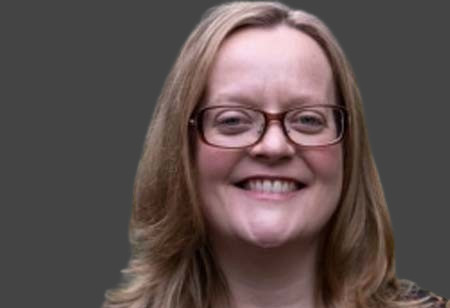Thank you for Subscribing to Healthcare Business Review Weekly Brief

Recent Challenges in the Healthcare Industry
Healthcare Business Review
In an interview, Jennifer Coller, clinical director of cardiology at Goulburn Valley Health, discusses about her experience of being a healthcare professional in times of Covid and the challenges the healthcare sector faces.
What are some of the major challenges and trends impacting the Healthcare industry lately?
The most significant challenge has been severe workforce shortages following the COVID-19 pandemic, particularly in remote and regional areas. This has had substantial flow-on effects on patient care delivery within hospital-based and primary care. We are also seeing more patients presenting with advanced diseases following lockdowns. For example, a reduction in face-to-face consultations decreased the potential for detecting important conditions such as atrial fibrillation, leading to an increased risk of stroke or heart failure. The resultant mismatch between demand and healthcare delivery is significant, and growing steadily.
Digitization and artificial intelligence are developing at a rapid pace and hold real promise to develop new ways of meeting patient demand. Patients are also expecting more from their healthcare providers, researching clinicians before they commit to a consultation, or requesting a review from a clinician they perceive as being aligned with their expectations and values. They are becoming more discerning and determining the direction of their referrals.
What keeps you up at night when it comes to some of the major predicaments in the Healthcare industry?
My main concern, even prior to the pandemic years, has been the mismatch between service delivery and the sheer scale of cardiovascular disease within Australia and globally. Healthcare services struggle to meet the demands of existing cardiovascular disease, let alone being able to focus on the prevention of these conditions through aggressive risk factor modification.
Another primary concern is the provision of equitable and accessible cardiovascular care. Socio-economic determinants of health significantly impact the risk of having cardiovascular disease and the ability to afford cardiac care. A major challenge is, therefore, to build healthcare systems designed to actively address these disparities in care to be equally accessible to all. Furthermore, there are limited resources and advocacy for those who face additional barriers to accessing care – such as those from indigenous, immigrant, and refugee communities – and may have more limited health literacy.
Can you tell us about the latest project you have been working on and what are some of the technological and process elements that you leveraged to make the project successful?
The big project I am working on right now is my private practice, Connected Cardiology, which was established at the end of 2019, shortly before the first COVID-19 lockdown. The practice has a specific focus on providing equitable and accessible healthcare. At the time, the uptake of telehealth to deliver cardiovascular care within regional Australia was very slow. I designed a practice to actively leverage the power of telehealth, alongside regular outreach services from metropolitan centers to regional areas, to provide the best outcomes to patients.
Little did we know that those services would become crucial to providing ongoing support for patients with cardiac conditions over the next three years.
I had originally designed the practice to be agile and flexible in the initial startup phase, managed remotely without bricks and mortar healthcare facilities. This allowed us to flex quickly during the disruption of the pandemic to flex quickly and respond to the needs of the communities we were serving.
We have worked hard to build a strong workplace culture that promotes working from home and provides flexible working hours. We have developed a hybrid workforce (remote/on-site) to overcome workforce shortages and difficulties in attracting highly specialized professionals to regional areas. We have people working in administrative roles from different states in Australia, and this has allowed them to enjoy their preferred location. We also harness the efficacy of job crafting to match the right employee with the right skill set for the right job. All these things foster trust and rapport within the team, allowing our employees to feel supported in their roles.
Socio-economic determinants of health significantly impact the risk of having cardiovascular diseases and the ability to afford cardiac care
We have recently been going through a review process to leverage automation and improve patient workflow to maximize efficiency. On a broader scale, we are looking to further strengthen and expand our current model of care to other areas of regional Australia. We can definitely use the expansion in digital health to benefit regional Australia, but it must be done with a specific regional lens and with careful planning around geography in particular.
What are some of the technological trends which excite you for the future of the Healthcare industry?
I think the most exciting trend is that of being able to harness the power of digital technology to provide a better patient experience, which is increasingly important as patients become more discerning in choosing their healthcare provider. We should be aiming to educate and empower our patients as much as possible, and we can use these new options to achieve that.
The advent of wearable technologies, such as smart watches and other devices, means we will be detecting more serious cardiac issues like atrial fibrillation, with early detection reducing the risk of stroke and heart failure.
And we must remember the rapid development of artificial intelligence, which may well, in the near future, be in routine use, augmenting, or performing cardiac risk assessments in our patients without overt cardiac disease. This could offer a scalable solution that could impact cardiovascular disease globally, allowing early intervention that could prevent many heart attacks and strokes, reduce the incidence of heart failure, and help patients enjoy their best lives.









